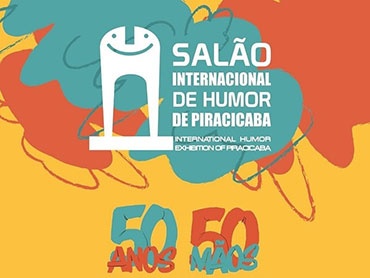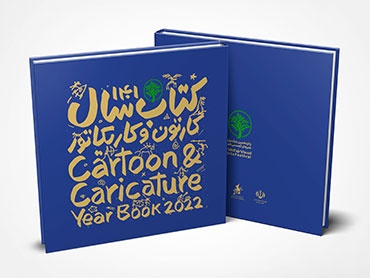
"War is a Great Disgrace" Exhibition
Guided tour of the "War is a Great Disgrace" exhibition at the Marc Museum
Silvia Dolinko and Guillermo Fantoni, authors of the curatorial texts, will guide the tour of one of the exhibition's core elements. It will be held on July 31st, with free admission.
This Thursday, July 31st, at 6:00 p.m., at the Dr. Julio Marc Provincial Historical Museum, there will be a guided tour of "A War Between Two Wars," one of the core elements of the "War is a Great Disgrace" exhibition. The tour will be led by Silvia Dolinko and Guillermo Fantoni, authors of the curatorial texts for the exhibition.
Along with Silvia Dolinko (School of Art and Heritage, UNSAM-Center for Research in Art and Heritage, Conicet), we will visit the room dedicated to the "14 Engravings" portfolio, published in 1935 by Unidad Publishing House, which contains works by renowned artists such as Berni, Berlengieri, and Facio Hebequer. With Guillermo Fantoni (Center for Research in Argentine and Latin American Art, UNR), we will tour the space that displays the sculptures of the Paino brothers and recalls the 14th Rosario Autumn Salon of 1935, in which the Chaco War played a prominent role.
Silvia Dolinko holds a PhD in Art History from the University of Buenos Aires and is an independent researcher at Conicet. She specializes in 20th-century Argentine and Latin American art, with an emphasis on the history of engraving and the printed image. She is a professor at the University of Buenos Aires and dean of the School of Art and Heritage at the National University of San Martín. He has published several books and academic articles in his area of expertise.
Guillermo Fantoni holds a PhD in Humanities and Arts with a minor in History. He is a member of the Scientific Research Program of the Research Council of the National University of Rosario (UNR) and a full professor of Argentine Art at the Faculty of Humanities and Arts at the same university. He directs the Center for Research on Argentine and Latin American Art and edits the magazine "Separata." He has curated significant exhibitions and published books, articles, and essays in specialized national and international media.
"Unity in the Face of War" (text by Silvia Dolinko)
Between late 1934 and early 1935, prints by established and emerging artists were compiled in the portfolio "14 Grabados," presented by the critic Córdova Iturburu, published in Buenos Aires by Editorial Unidad. Considering the names of the publishing house, the prologue writer, and the participating artists, it's possible to surmise that this work was the precursor to the Association of Intellectuals, Artists, Journalists, and Writers (AIAPE), which, founded in June 1935, had an important editorial anchor in Unidad magazine. These projects, undertaken in the context of the anti-fascist front policy, were strongly influenced by the hegemony of the Communist Party.
In those years, the multi-faceted use of woodcuts, etchings, and lithography established printmaking as a modern artistic production associated with the dissemination of leftist imagery and struggle. These were the techniques used to produce the 100 prints that make up this portfolio.
The monochrome images that comprise it—except only for Guillermo Facio Hebequer's striking red flag—show peasants and workers, combative masses and haranguing orators, crippled children, caricatured bourgeois, and stylized symbolic figures. The works of Juan Berlengieri and Antonio Berni focus on denouncing the war; the latter's print—the earliest of his production known—demonstrates his commitment to the Communist Party's position on the Chaco War.
Ninety years after their creation, the 14 prints are emerging from the portfolio for the first time and are displayed in full public view in an exhibition.
"The Activism of the Paino Brothers and the Alternatives of the 14th Salon of 1935" (text by Guillermo Fantoni)
In May 1935, Antonio Berni participated with his colleagues and disciples from the Popular Mutual Association of Students and Plastic Artists in the 14th Autumn Salon of Rosario. Given the open nature of that edition, it was the only opportunity for the group members to present large-format works with social and political themes, many of them created together and using new techniques, following the aesthetic and ideological guidelines proposed by David Alfaro Siqueiros in the controversial lectures given in Buenos Aires and Rosario during 1933.
Consequently, one of the most resonant contemporary events, the bloody dispute between the armies of Paraguay and Bolivia between September 1932 and June 1935, was addressed by these artists.
Read more
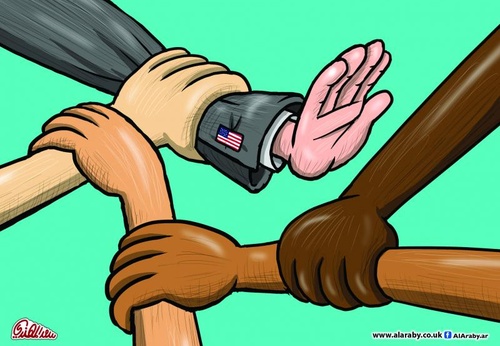
- December 14, 2025
Trump's racism
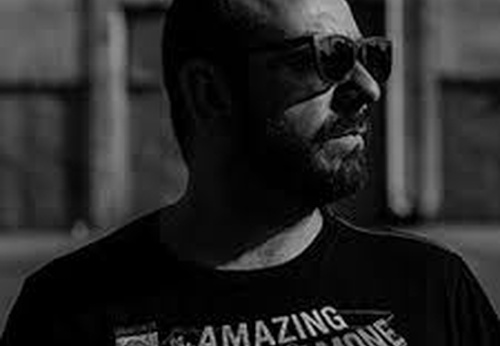
- December 14, 2025
Leopoldo Anjo - Brazil
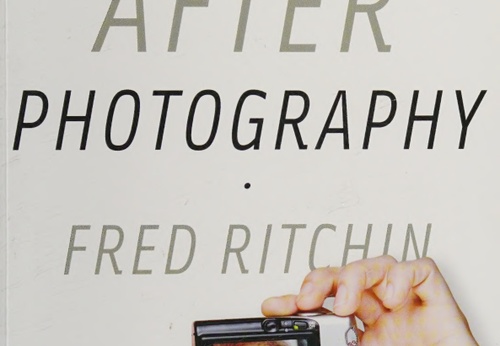
- December 14, 2025
After Photography by Fred Ritchin
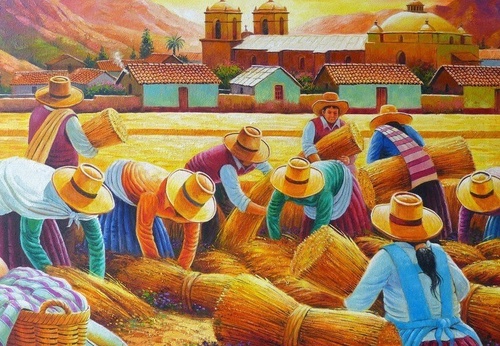
- December 13, 2025
Visual Art in Peru: Ancestral Tradition and Contemporary Creation
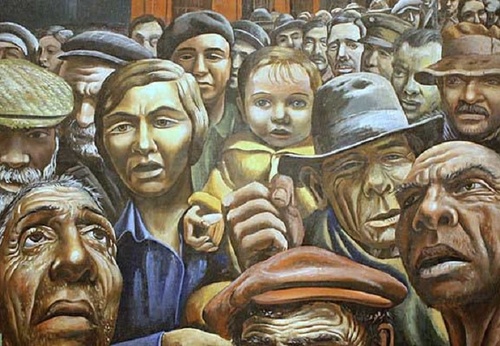
- December 13, 2025
Visual Art in Argentina: Identity, Memory, and Experimentation
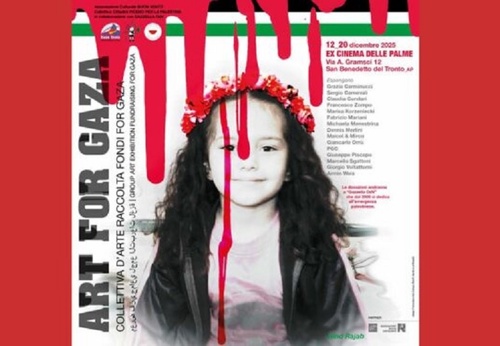
- December 13, 2025
Art for Gaza
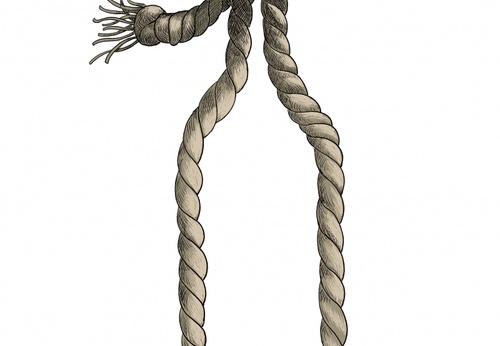
- December 13, 2025
end

- December 13, 2025
PirateXXI Trump in his pirate version. XXI
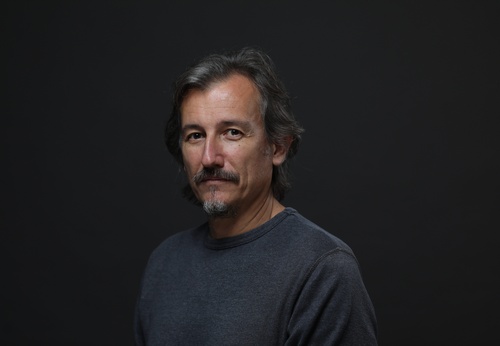
- December 13, 2025
Lalo de Almeida - Brazil

- December 13, 2025
Art for Gaza

- December 10, 2025
Pinta Miami 2025 Reaffirms the Strength…

- December 09, 2025
“GENOCIDE” Exhibition and Controversy O…

- December 09, 2025
Indigo Celebrates its 21st Anniversary …

- December 07, 2025
7 Art and Culture Recommendations for T…

- December 07, 2025
Why is Frida Kahlo the woman with the m…

- December 06, 2025
Argentine Art Makes a Grand Entrance at…

- December 06, 2025
Pinta Miami Highlights Sustainable Lati…

- December 04, 2025
Pinta Miami 2025: Epicenter of Contempo…

- December 03, 2025
Pinta Miami Boosts Latin American Art

- December 02, 2025
Exhibition “Unspeakable Gestures,” by A…

- December 02, 2025
Malba: “Pop Brasil” is an essential exh…

- December 01, 2025
Key Fair for Contemporary Latin America…

- December 01, 2025
Unseen Renoir work resurfaces after a c…

- November 30, 2025
How Brazilian Pop Art Challenged the Di…

- November 30, 2025
Palestinian Artist Transforms War Rubbl…

- November 29, 2025
Latin America's Most Important Craft Fa…

- November 29, 2025
Miami, with a Latin rhythm: the region'…

- November 26, 2025
Frida Kahlo Breaks World Auction Record

- November 23, 2025
Latin American Abstract Painting: From …

- October 08, 2023
Illustrations reflect the brutal Israel…

- December 25, 2023
The jury statement of the Iran-Brazil F…

- March 21, 2024
The history of art in Palestine

- July 29, 2023
History of Caricature in Brazil

- April 20, 2024
Poignant Image of Grief Wins Mohammed S…

- May 22, 2025
Brady Izquierdo’s Personal Exhibition O…

- September 01, 2023
Neural Filters in new photoshop 2023

- October 21, 2023
Erick Meyenberg and Tania Ragasol at th…

- June 29, 2024
Exhibition at Centro MariAntonia contra…

- May 15, 2024
Eleven murals for Gaza painted across t…

- February 18, 2024
7 Ways to Understand What Visual Arts A…

- March 14, 2024
museum of statue of van gogh

- May 25, 2025
Bordalo II to hold exhibition in Paris …

- March 15, 2024
museum of sculpture of Salvador Dali

- May 20, 2024
Latin American Festival of Performing A…

- August 09, 2023
Venezuela mural expresses solidarity wi…

- March 30, 2024
illustration websites in Latin America

- July 30, 2024
The artist from San Luis Mirta Celi rep…

- May 27, 2025
Works by Botero, Grau, and 80 other imp…

- January 23, 2025
Art Palm Beach 2025

- May 15, 2024
Eleven murals for Gaza painted across t…

- February 18, 2024
7 Ways to Understand What Visual Arts A…

- January 02, 2025
13 commemorations that will mark the cu…

- October 17, 2023
The influence of Latin American artists…

- February 03, 2024
THE HISTORY OF NAIF ART

- July 02, 2024
One of the largest urban art galleries …

- October 08, 2023
Illustrations reflect the brutal Israel…

- November 17, 2023
Fernando Botero's work is booming after…

- July 29, 2023
Piracicaba International Humor Exhibiti…

- November 06, 2023
Heba Zagout: Palestinian artist murdere…

- December 25, 2023
The jury statement of the Iran-Brazil F…

- December 10, 2023
Sliman Mansour and Palestinian art on t…

- March 14, 2024
museum of statue of van gogh

- February 01, 2025
A maior exposição de Botero em Barcelona

- March 21, 2024
The history of art in Palestine

- July 20, 2024
First International Mail Art Biennial 2…

- April 20, 2024
Poignant Image of Grief Wins Mohammed S…

- October 30, 2023
Palestinian turns images of the Gaza co…

- September 01, 2023
Neural Filters in new photoshop 2023

- February 08, 2024

